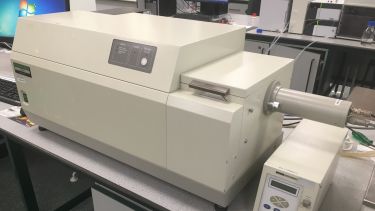Polarimetry and Circular Dichroism
The Polarimetry and Circular Dichroism (CD) Spectroscopy Services are analytical facilities based in the School of Mathematical and Physical Sciences and are offered to all University of Sheffield departments as well as external customers.

Polarimetry
A polarimeter is used to measure specific rotation which is a measure of the ability of optically active or ‘chiral’ compounds to rotate the plane of monochromatic plane-polarised light.
This value can be used in the prediction of enantiomeric excess. Minimum sample size is usually 20mg’s but maybe more depending on the required analysis.
Samples are analysed in solution (or as neat liquids) in one of the ranges of cells available. Wavelength, temperature, solvent and concentration are all relevant to a specific rotation and should always be noted.
Traditionally the wavelength of 589nm (Sodium D-line) is used but more sensitivity may be obtained using 546nm (Mercury E-line).
Circular Dichroism (CD) Spectroscopy
Circular dichroism may be observed in optically active or ‘chiral’ materials when they absorb left and right-handed circularly polarised light slightly differently.
Measured using a CD Spectropolarimeter, a CD spectrum shows this difference in absorbance as a function of wavelength.
Contact
In the first instance please contact Joseph Quick, Technical Manager, who can discuss your query with you and direct you to the most appropriate member of our analytical services team.
Email: j.p.quick@sheffield.ac.uk
University of Sheffield customers should bring their samples along with a completed Internal service form and purchase order form (members of the the School of Mathematical and Physical Sciences do not need a purchase order form) to lab C43 in the Dainton Building (turn left in the main entrance and follow the corridor around to the right).
